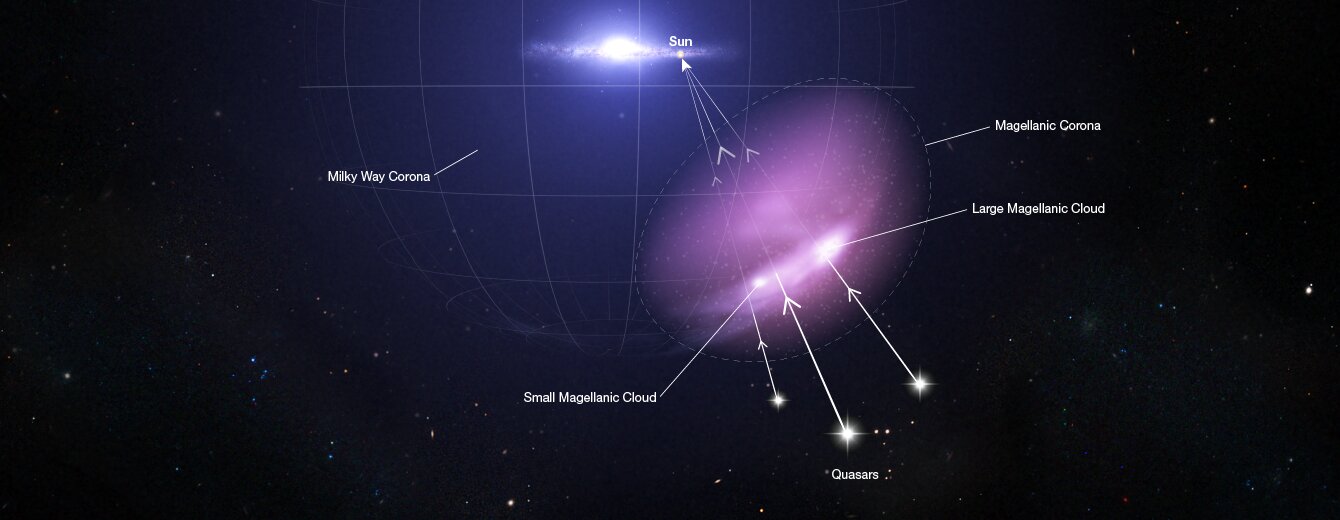
Credits: NASA, ESA, and Joseph Olmsted (STScI)
A young planet whirling around a petulant red dwarf star is changing in unpredictable ways orbit-by-orbit...
Read More

A young planet whirling around a petulant red dwarf star is changing in unpredictable ways orbit-by-orbit...
Read More
The early universe was a rambunctious place where galaxies ofte...
Read More
In giant clusters of hundreds or thousands of galaxies, innumerable stars wander among the galaxies like lost souls, emitting a ghostly haze of light...
Read More
For billions of years, the Milky Way’s largest satellite galaxies—the Large and Small Magellanic Clouds—have followed a perilous journey. Orbiting one another as they are pulled in toward our home galaxy, they have begun to unravel, leaving behind trails of gaseous debris. And yet—to the puzzlement of astronomers—these dwarf galaxies remain intact, with ongoing vigorous star formation.
“A lot of people were struggling to explain how these streams of material could be there,” said Dhanesh Krishnarao, assistant professor at Colorado College. “If this gas was removed from these galaxies, how are they still forming stars?”
With the help of data from NASA’s Hubble Space Telescope and a retired satellite called the Far Ultraviolet Spectroscopic Explorer (FUSE), a t...
Read More
Recent Comments